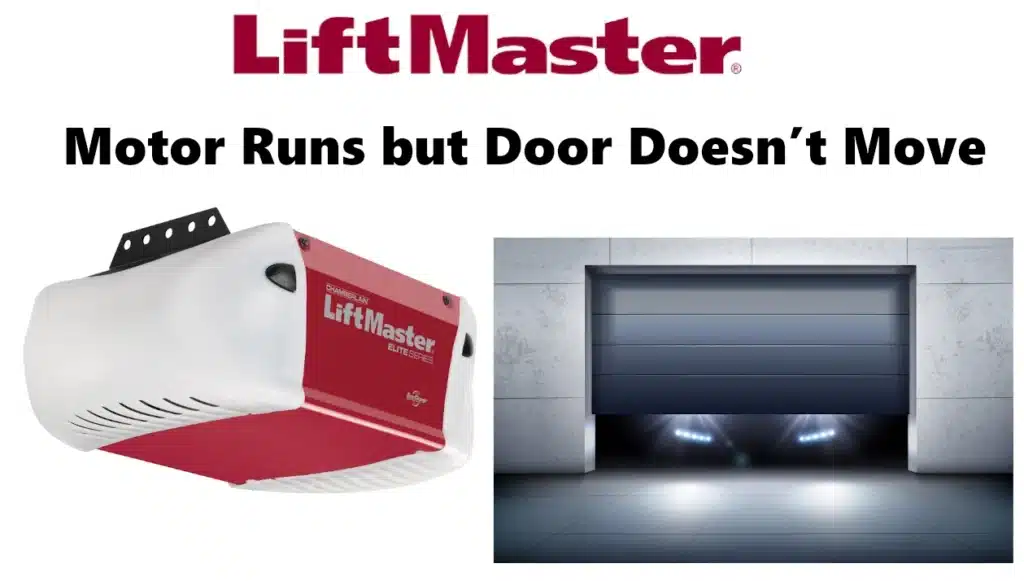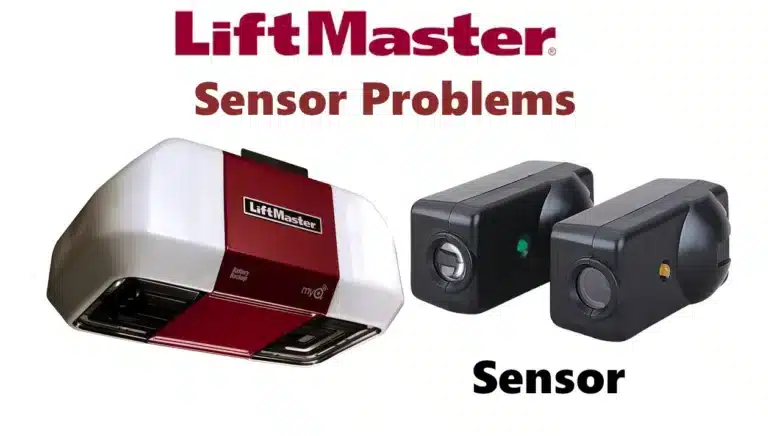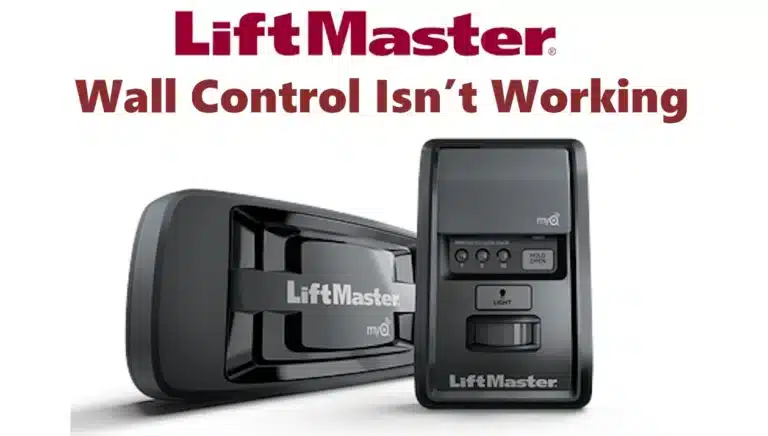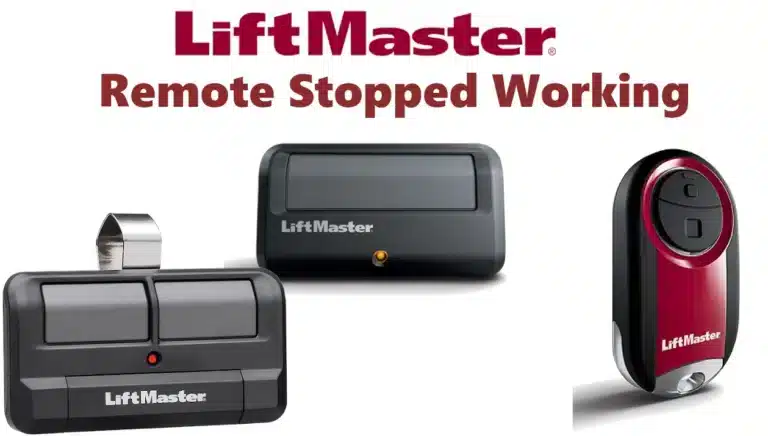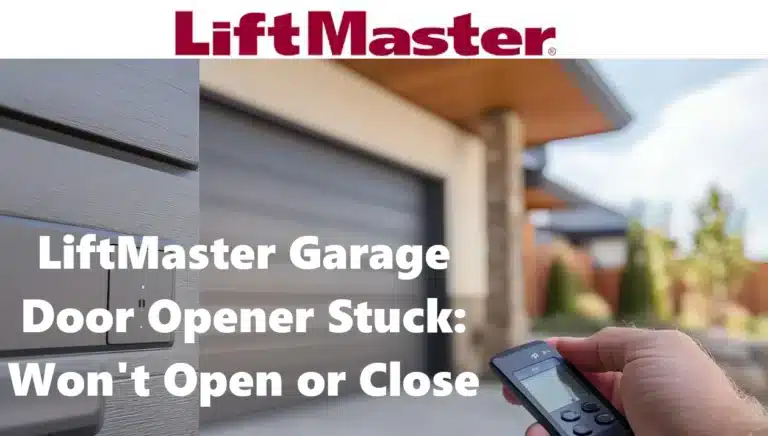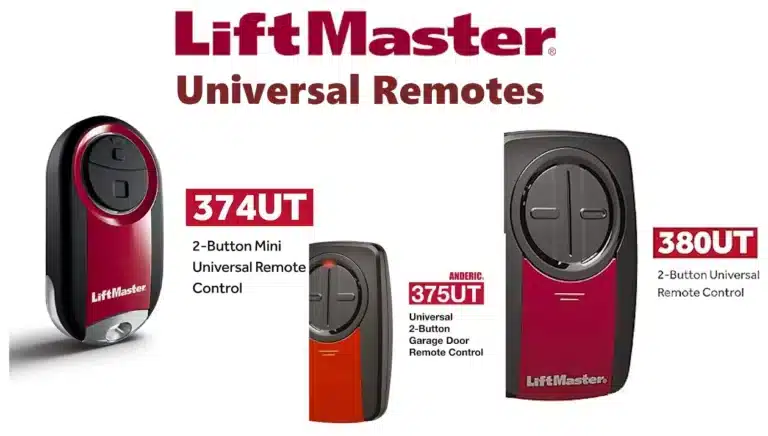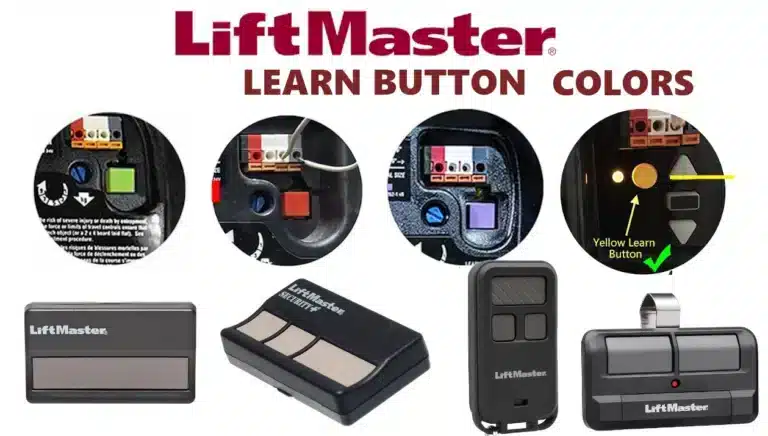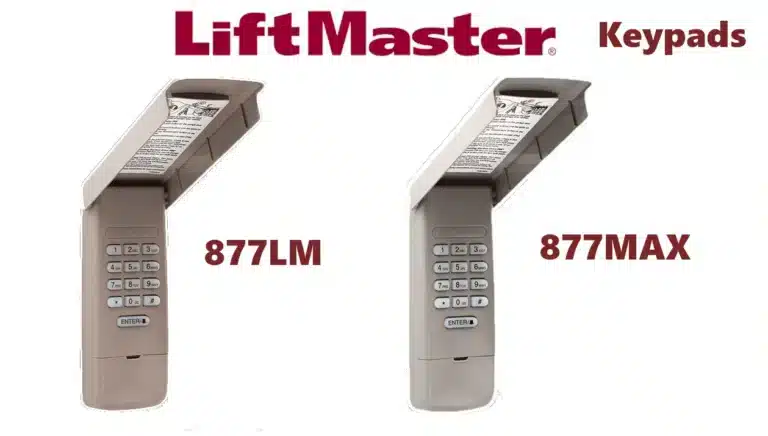You press the button, you can hear the garage door opener’s motor running, but the door itself is not budging. This scenario indicates a disconnect between the opener and the door. Here’s how to troubleshoot a motor that sounds like it’s running (or you see the chain/belt moving) but the door stays put:
Check Your LiftMaster Garage Door Emergency Release
The first thing to check is whether the garage door has been accidentally disengaged from the opener. All garage door openers have an emergency release cord (usually red) that allows you to manually operate the door. If this cord was pulled downward, the opener trolley is disconnected from the door arm. In this state, the opener will run (you might even see the trolley carriage slide along the rail), but it’s not attached to the door – so the door won’t move. Solution: If your door is detached, reattach it.
Typically, ensure the door is down, then either pull the red cord down and back toward the opener until it clicks back into the carriage, or simply hit the remote and the trolley will travel and snap back onto the door arm catch. You may need to manually move the door a bit until the attachment point re-engages.
Troubleshoot and Check Your LiftMaster Chain or Belt Fast
If the opener uses a chain or belt, inspect it. A broken chain will obviously result in no door movement (you might hear the motor whir freely). If the chain is intact, see if it’s slipped off the sprocket on the opener. A dangling chain or belt means the connection between motor and door is lost. In that case, do not run the opener further – you’ll need to put the chain/belt back on its sprockets and adjust tension. If the chain is off due to a broken sprocket or gear, you’ll need replacement parts.
On belt models, a broken belt will likewise leave the motor spinning with no effect. Replace the belt if broken. In summary, any disconnected drive (chain/belt) will cause the motor to run without moving the door. Reconnecting or replacing the drive will fix the issue. After reattaching a chain or belt, adjust it to the proper tension (chains should have a slight sag, belts should be snug per manual specs).
LiftMaster Gear Might Need Replacement
Inside the opener, the motor’s output gear (often a nylon gear in LiftMaster chain drives) can wear out or strip teeth after years of use. When that happens, the motor spins, but it cannot drive the chain or belt. Signs of a stripped gear include a grinding noise or the opener running very quickly with no load. If you suspect this, you might see plastic shavings inside the opener. Unfortunately, a broken drive gear means you’ll need to replace that gear (LiftMaster sells repair kits for common models) or replace the opener.
Solution: If comfortable, you can follow a gear replacement procedure from a repair kit, or call a service technician to do it. A clue for this issue is if the chain/belt is in place and the emergency release is engaged, but the chain doesn’t move at all when the motor runs – that often points to an internal gear failure.
Door Jammed or Stuck:
It’s possible the door itself is obstructed or locked such that the opener tries to pull it but cannot. In many of these cases, the opener will sense the resistance and shut off (and likely you’d see the door jolt slightly or hear it strain). However, if the force setting is too high or malfunctioning, the motor might keep pushing against a stuck door. Check for any physical reason the door can’t move: locks engaged, track blockages, or severe damage. Also, cold weather can freeze the door seal to the ground – causing the opener to struggle. Free any jams and attempt operation again.
Broken Springs or Counterbalance Issue:
As mentioned in the earlier section, if a spring is broken the opener may run but be unable to lift the door. In some cases, the trolley might even slide (if the force limit isn’t tripped, the motor could unwind the chain without moving the door). If you haven’t already, verify that the torsion spring above the door (or extension springs along the tracks) are intact. Never remove or adjust springs yourself, but if they’re broken, have them replaced. Once the spring is fixed, the opener should be able to lift the door again. Continuing to run the opener with a broken spring can overheat and damage the motor.
LiftMaster Opener Clicking? Find Out What’s Wrong
Some LiftMaster models will attempt to move a jammed door briefly and then the logic board will stop the motor, resulting in a click sound. If you hear the motor try (maybe a short hum) and then it clicks off without moving the door, this could be a safety cut-off. Check the diagnostic LED on the unit if accessible – for example, error code “1-5” on some openers indicates “motor overheated or stalled”. In any case, don’t repeatedly run a stalled motor; find and fix the mechanical issue first.
If after all these checks the motor still runs without moving the door, you likely have an opener internal issue that requires repair or replacement (gear kit or logic board). You’ve ruled out the simple causes – now it’s either a component in the opener or something unusual like a failed sprocket coupling. At this point, contacting a garage door opener professional is wise if you haven’t pinpointed the problem.

